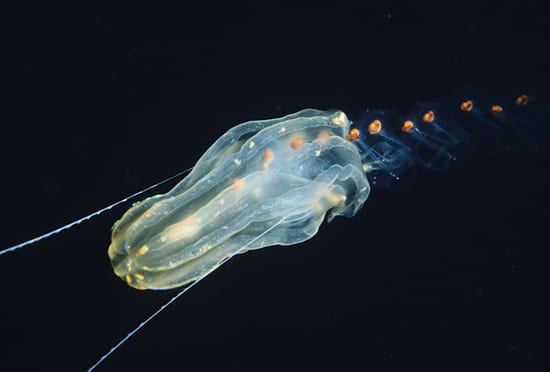Many kinds of gelatinous and transparent “jellies” inhabit the oceans, and some even eat other jellies. On the left—biting off more than it can chew—is Lampea pancerina, a species of ctenophore, or “comb jelly.” It speciallizes in eating salps (gelatinous animals that eat tiny marine plants) and can stretch to consume meals much bigger than itself. Scientists find that jellies have much to offer science; they even played a role with Nobel Prize-winning research this week. Chemists from Japan and America, including one affiliated with Woods Hole, won for their development of a green fluorescent protein from jellyfish that has provided researchers a new window into the workings of the cell. The fluorescent proteins are used for observing the growth and fate of specific cells, like nerve cells, damaged during Alzeheimer’s disease or due to tumors.
(Photo by Laurence Madin, Woods Hole Oceanographic Institution)
Image and Visual Licensing
WHOI copyright digital assets (stills and video) on this website can be licensed for non-commercial use upon request and approval. Please submit your request via our Media Request Form.
For assistance or accessibility accommodations, call (508) 289-2647.
